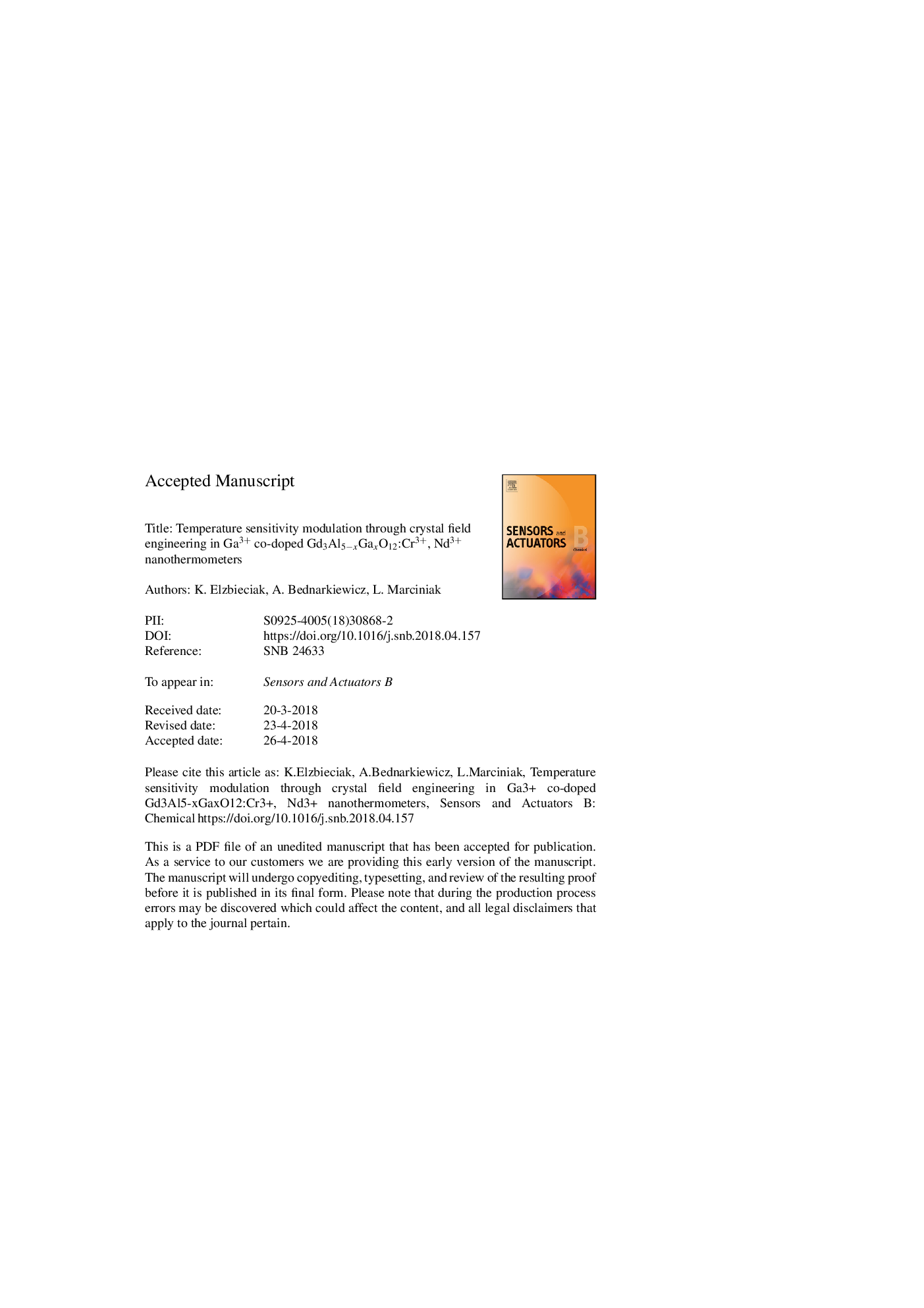| Article ID | Journal | Published Year | Pages | File Type |
|---|---|---|---|---|
| 7139101 | Sensors and Actuators B: Chemical | 2018 | 24 Pages |
Abstract
Luminescent nanothermometry (LNT) based on temperature-dependent emission intensity of transition metals (TM) is a promising new direction to enhance the performance and implement LNT in many fields of science and technology. However, insightfully understanding and analysis of the luminescence thermal quenching mechanisms in this type of compounds is required. In this work, we study temperature sensitivity (S) modified by crystal field engineering in Gd3Al5-xGaxO12:Cr3+, Nd3+ TM:LNTs. Substituting Al3+ ions in the host matrix by Ga3+ ones, caused gradual decline of crystal field strength from Dq/Bâ¯=â¯2.69 for Gd3Al5O12:Cr3+, Nd3+ to the Dq/Bâ¯=â¯2.18 for Gd3Ga5O12:Cr3+, Nd3+. In consequence, improvement of relative sensitivity was observed. Two temperature dependent parameters were taken into considerations as potential temperature measure, i.e. luminescence intensity ratios of 4T2â¯ââ¯4A2 (Cr3+) to 4F3/2â¯ââ¯4I9/2 (Nd3+) and 2Eâ¯ââ¯4A2 (Cr3+) to 4T2â¯ââ¯4A2 (Cr3+). The proposed method, based on crystal field strength engineering, improved the relative temperature sensitivity by over 1.37%/°C for â1 Dq/B change in crystal field strength, from initial 1.2-1.9%/°C.
Related Topics
Physical Sciences and Engineering
Chemistry
Analytical Chemistry
Authors
K. Elzbieciak, A. Bednarkiewicz, L. Marciniak,
